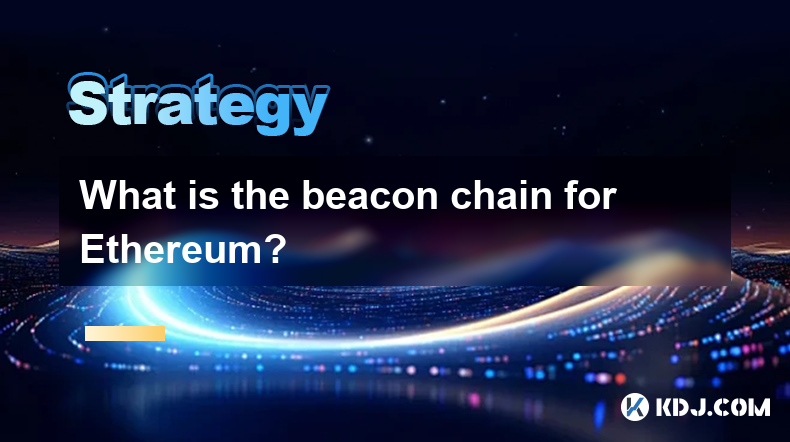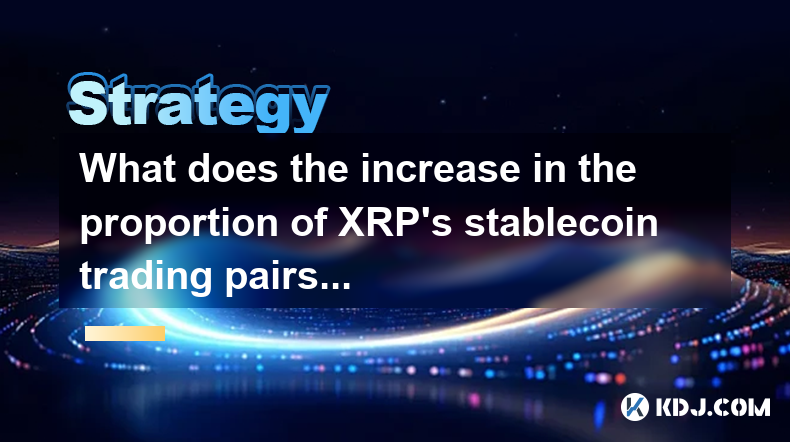-
 Bitcoin
Bitcoin $92,981.9173
6.53% -
 Ethereum
Ethereum $1,749.0917
11.02% -
 Tether USDt
Tether USDt $1.0003
0.03% -
 XRP
XRP $2.2086
6.33% -
 BNB
BNB $613.3423
2.79% -
 Solana
Solana $148.8333
9.50% -
 USDC
USDC $0.9998
0.02% -
 Dogecoin
Dogecoin $0.1773
11.87% -
 Cardano
Cardano $0.6807
9.77% -
 TRON
TRON $0.2473
0.38% -
 Chainlink
Chainlink $14.0424
7.73% -
 Avalanche
Avalanche $22.0972
11.69% -
 Sui
Sui $2.6888
23.01% -
 UNUS SED LEO
UNUS SED LEO $9.0455
-1.01% -
 Stellar
Stellar $0.2655
6.08% -
 Shiba Inu
Shiba Inu $0.0...01347
9.34% -
 Toncoin
Toncoin $3.0725
6.56% -
 Hedera
Hedera $0.1811
7.59% -
 Bitcoin Cash
Bitcoin Cash $362.5390
5.24% -
 Hyperliquid
Hyperliquid $19.0259
5.47% -
 Litecoin
Litecoin $83.6360
7.80% -
 Polkadot
Polkadot $4.0136
6.31% -
 Bitget Token
Bitget Token $4.5803
3.23% -
 Dai
Dai $0.9999
0.00% -
 Ethena USDe
Ethena USDe $0.9995
0.02% -
 Pi
Pi $0.6474
2.06% -
 Monero
Monero $225.1304
4.67% -
 Pepe
Pepe $0.0...08749
13.06% -
 Uniswap
Uniswap $5.7946
10.28% -
 Aptos
Aptos $5.2565
6.80%
What is the beacon chain for Ethereum?
As a parallel blockchain, the Beacon Chain orchestrates Ethereum's transition to proof-of-stake consensus through the upcoming Merge event, enhancing scalability, security, and sustainability.
Feb 25, 2025 at 04:01 am

Key Points:
- Understanding the Beacon Chain's Role in Ethereum's Upgrade
- Preparing for the Merge and Transition to Proof-of-Stake
- Exploring the Benefits and Challenges of the Beacon Chain
- Evaluating the Impact on Ethereum's Ecosystem and Use Cases
- Assessing the Progress and Timeline of the Beacon Chain's Development
What is the Beacon Chain for Ethereum?
In anticipation of Ethereum's impending transition to the proof-of-stake (PoS) consensus mechanism, the Beacon Chain was introduced as a separate blockchain that runs alongside the existing Ethereum blockchain. The Beacon Chain serves as the backbone of the PoS system and plays a pivotal role in the upcoming major upgrade known as the Merge. Here's an in-depth exploration of the Beacon Chain and its multifaceted functions:
1. The Birth of the Beacon Chain: A New Era for Ethereum
To enhance the scalability, security, and sustainability of the Ethereum network, the Beacon Chain was initiated in December 2020 as a parallel blockchain. Its primary objective is to orchestrate the consensus process, facilitating the transition from the current proof-of-work (PoW) mechanism to the more energy-efficient PoS.
2. Upgrading to Proof-of-Stake: A Paradigm Shift for Ethereum
The Merge, slated to occur in mid-2023, will merge the Beacon Chain with the Ethereum blockchain. This momentous event will mark the full deployment of PoS on Ethereum, significantly transforming the network's architecture. With PoS, the consensus and validation of transactions will be handed over to validators, who stake their ETH to participate in the process.
3. Becoming a Validator: Staking in Ethereum's New Era
To become a validator on the Ethereum network, one needs to stake a minimum of 32 ETH. Validators are responsible for processing and verifying transactions, and their rewards are proportional to their stake. The PoS system incentivizes honest behavior, as validators can lose their stake if they engage in malicious activities.
4. Increased Scalability: Paving the Way for Ethereum's Evolution
One of the primary advantages of the Beacon Chain is its potential to significantly enhance Ethereum's scalability. By incorporating a sharding mechanism, the network can be split into multiple parallel chains, allowing for increased transaction throughput and reduced network congestion. This will pave the way for future growth and widespread adoption.
5. Security and Decentralization: Strengthening Ethereum's Core
The Beacon Chain also introduces advanced cryptographic techniques to bolster the security of the Ethereum network. PoS encourages decentralization as it doesn't require specialized hardware like PoW, making blockchain participation more accessible to a broader range of nodes. These enhancements contribute to the overall robustness and longevity of the Ethereum ecosystem.
6. Environmental Sustainability: Embracing a Greener Future
The transition to PoS aligns with Ethereum's long-standing commitment to environmental sustainability. By eliminating the energy-intensive mining process, the network's carbon footprint will be drastically reduced, making it more environmentally friendly and compliant with sustainability goals.
7. Challenges in the Transition: Navigating the Path to PoS
While the Beacon Chain holds great promise, it also presents certain challenges during the transition phase. Coordinated efforts are crucial to ensure a smooth Merge and minimize potential disruptions. Additionally, validators should adhere to strict technical requirements and ethical guidelines to maintain the integrity of the network.
8. The Future of Ethereum: Unlocking a New Horizon
The Beacon Chain represents a transformative step in Ethereum's journey, ushering in a new era of improved scalability, security, and sustainability. As the Merge approaches, the Ethereum community remains engaged in refining the Beacon Chain to optimize its performance and fulfill the network's vast potential.
FAQs:
- What is the difference between the Beacon Chain and the Ethereum blockchain?
The Beacon Chain serves as a parallel blockchain that manages the consensus mechanisms. It runs alongside the Ethereum blockchain, which still handles smart contract execution. The Merge will merge the two blockchains into a single PoS network.
- What advantages does the Beacon Chain bring to Ethereum?
The Beacon Chain introduces PoS, allowing for scalability improvements, enhanced security, and reduced energy consumption.
Disclaimer:info@kdj.com
The information provided is not trading advice. kdj.com does not assume any responsibility for any investments made based on the information provided in this article. Cryptocurrencies are highly volatile and it is highly recommended that you invest with caution after thorough research!
If you believe that the content used on this website infringes your copyright, please contact us immediately (info@kdj.com) and we will delete it promptly.
- Galaxy Digital Holdings (BRPHF) Explodes Higher, Notching a Dramatic Intraday Surge
- 2025-04-23 08:05:12
- Why Qubetics Is the Best Altcoin to Buy Now
- 2025-04-23 08:05:12
- Oregon Sues Coinbase for Unregistered XRP and 30 Other Tokens as Securities
- 2025-04-23 08:00:12
- Why $3.5 Could Mark the Bull Run Peak for Kaspa: Timeline and Triggers Revealed
- 2025-04-23 08:00:12
- XRP Defies Retail Sell-Off With Strong Inflows
- 2025-04-23 07:55:13
- LCX Has Officially Published Its White Paper of Three New Utility Tokens
- 2025-04-23 07:55:13
Related knowledge

Where can I find the current average holding cost of XRP in the market?
Apr 22,2025 at 11:00pm
Where can I find the current average holding cost of XRP in the market? Finding the current average holding cost of XRP in the market can be a challenging task, as this information is not readily available on most mainstream cryptocurrency platforms. However, there are several methods and resources that you can use to estimate this figure. In this artic...

Where is the short-term holding cost line of BCH?
Apr 23,2025 at 06:00am
The short-term holding cost line of Bitcoin Cash (BCH) is a crucial metric for traders and investors looking to understand the immediate market sentiment and potential price movements. This line represents the average cost at which BCH has been held for a short period, typically considered to be less than 30 days. By analyzing this metric, market partic...

Is BCH's UTXO age distribution useful for judging buying and selling points?
Apr 23,2025 at 02:07am
The concept of UTXO (Unspent Transaction Output) age distribution in Bitcoin Cash (BCH) can be a valuable tool for analyzing market trends and potentially identifying buying and selling points. UTXO age distribution refers to the age of unspent outputs in the blockchain, which can provide insights into the behavior of different types of investors and th...

Can BCH's PSAR indicator chase the rise when it turns from empty to long?
Apr 22,2025 at 10:35pm
The Parabolic Stop and Reverse (PSAR) indicator is a popular tool among traders in the cryptocurrency market, including those trading Bitcoin Cash (BCH). The PSAR indicator is designed to identify potential reversals in the price trend of an asset. When the PSAR indicator turns from empty to long, it suggests a potential bullish trend, prompting traders...

What does the increase in the proportion of XRP's stablecoin trading pairs indicate?
Apr 23,2025 at 02:00am
The increase in the proportion of XRP's stablecoin trading pairs indicates a significant shift in the trading dynamics of XRP on cryptocurrency exchanges. This trend suggests several important factors at play within the XRP ecosystem and the broader crypto market. Let's delve deeper into what this increase signifies. Higher Liquidity and Trading VolumeT...

What does BCH's SOPR indicator fall below 1 mean?
Apr 23,2025 at 01:29am
The SOPR (Spent Output Profit Ratio) is a significant indicator used in the cryptocurrency market, particularly for analyzing the profitability of transactions on the Bitcoin Cash (BCH) network. When BCH's SOPR falls below 1, it signals that the average investor is selling their BCH at a loss. This article will delve into the implications of this phenom...

Where can I find the current average holding cost of XRP in the market?
Apr 22,2025 at 11:00pm
Where can I find the current average holding cost of XRP in the market? Finding the current average holding cost of XRP in the market can be a challenging task, as this information is not readily available on most mainstream cryptocurrency platforms. However, there are several methods and resources that you can use to estimate this figure. In this artic...

Where is the short-term holding cost line of BCH?
Apr 23,2025 at 06:00am
The short-term holding cost line of Bitcoin Cash (BCH) is a crucial metric for traders and investors looking to understand the immediate market sentiment and potential price movements. This line represents the average cost at which BCH has been held for a short period, typically considered to be less than 30 days. By analyzing this metric, market partic...

Is BCH's UTXO age distribution useful for judging buying and selling points?
Apr 23,2025 at 02:07am
The concept of UTXO (Unspent Transaction Output) age distribution in Bitcoin Cash (BCH) can be a valuable tool for analyzing market trends and potentially identifying buying and selling points. UTXO age distribution refers to the age of unspent outputs in the blockchain, which can provide insights into the behavior of different types of investors and th...

Can BCH's PSAR indicator chase the rise when it turns from empty to long?
Apr 22,2025 at 10:35pm
The Parabolic Stop and Reverse (PSAR) indicator is a popular tool among traders in the cryptocurrency market, including those trading Bitcoin Cash (BCH). The PSAR indicator is designed to identify potential reversals in the price trend of an asset. When the PSAR indicator turns from empty to long, it suggests a potential bullish trend, prompting traders...

What does the increase in the proportion of XRP's stablecoin trading pairs indicate?
Apr 23,2025 at 02:00am
The increase in the proportion of XRP's stablecoin trading pairs indicates a significant shift in the trading dynamics of XRP on cryptocurrency exchanges. This trend suggests several important factors at play within the XRP ecosystem and the broader crypto market. Let's delve deeper into what this increase signifies. Higher Liquidity and Trading VolumeT...

What does BCH's SOPR indicator fall below 1 mean?
Apr 23,2025 at 01:29am
The SOPR (Spent Output Profit Ratio) is a significant indicator used in the cryptocurrency market, particularly for analyzing the profitability of transactions on the Bitcoin Cash (BCH) network. When BCH's SOPR falls below 1, it signals that the average investor is selling their BCH at a loss. This article will delve into the implications of this phenom...
See all articles























































































